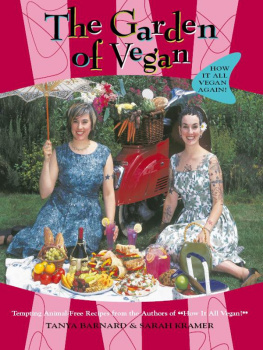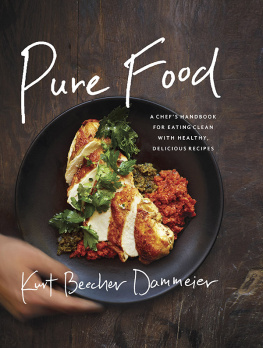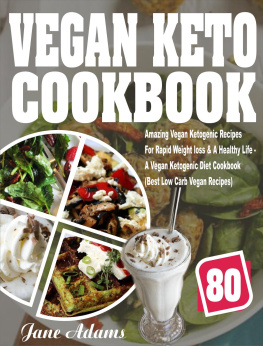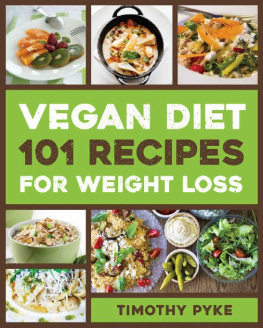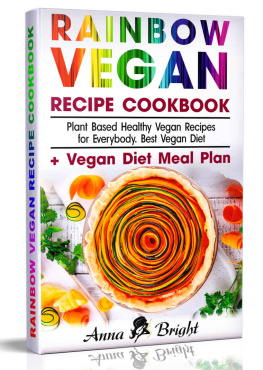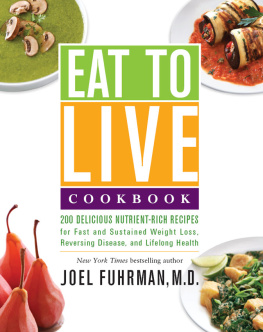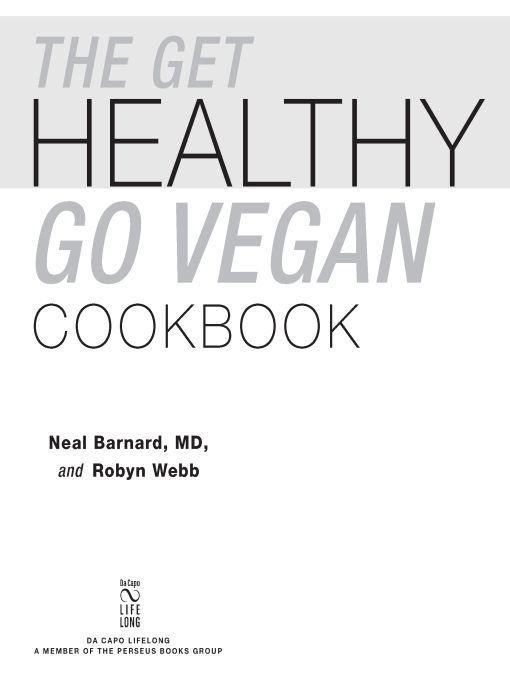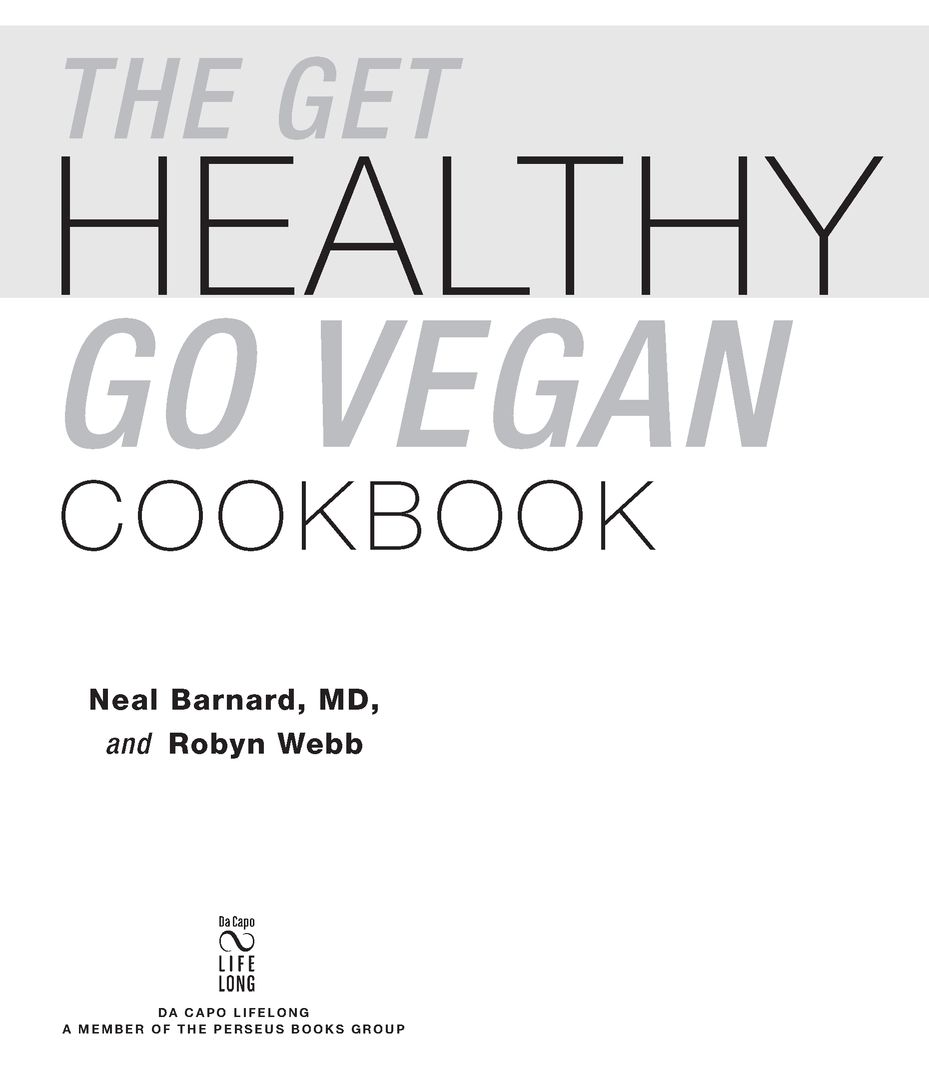Table of Contents
INTRODUCTION
THIS BOOK HOLDS the culinary secrets to lifelong health. These 125 easy and delicious recipes will lure you with their aromas and flavors, many familiar, some new. But what awaits you is more than simply a treat for the taste buds. These recipes are powerful. They will help you trim down, lower your cholesterol, bring your blood sugar and blood pressure under control, and get your energy back. And if you are healthy now, these wonderful foods will help you stay that way.
As it stands, most people are not eating very well. In North America, our dietary staples are not vegetables, fruits, brown rice, or other healthful foods. No, for many people, a meal is not a meal unless there is a big chunk of meat in the middle of the plate, with a little pile of green beans or corn tossed in as an afterthought. That was the way it was when I grew up, and I suspect something similar may have been true for you, too.
As a result of our less-than-healthful eating habits, Americans tend to be heavier than people from other countries, and, perhaps surprisingly, we do not live as long as they do. Even with our high-tech medical care, Americans are likely to be felled by heart attacks, cancer, diabetes, or other problems. Our lives are about four years shorter on average compared with that of people in Japan, where the dietary staples are reversed: rice, noodles, and vegetables are mainstays, while meat traditionally serves mainly as a flavoring. And our quality of life suffers, too. We are less able to work, dance, or play tennis in our later years, and are more likely to be on medicines or in the hospital.
And things are worsening year by year. Back in the 1960s, bacon and eggs showed up at breakfast, and roast beef and gravy were on Americas dinner plates. Lunch may or may not have been another meaty meal. And then McDonalds arrived, as did Burger King, Wendys, and Pizza Hut. They were not selling broccoli, carrots, and asparagus sushi. Even in the smallest cities, these fast-food restaurants ushered in a load of meat, cheese, and soda that pushed fat and calories to unprecedented levels in our diets. Here are the numbers:
When the federal government began keeping records in 1909, the average American ate about 124 pounds of meat per year. By 1970, that figure had soared to over 175 pounds. As the new millennium arrived, the figure burst through the 200-pound mark.
A century ago, the average American ate less than 4 pounds of cheese in an entire year. By 2009, that figure was over 33 pounds, thanks to cheeseburgers, cheese pizza, and cheese on just about everything else.
Sugar intake has risen by about 20 pounds per person per year just since 1970.
In other words, our eating habits were never very good in North America, but in recent decades they have gotten a whole lot worse. An ever-increasing load of meat, cheese, and sugar makes weight problems inevitable. Today, two-thirds of Americans are beyond the boundaries of a healthy weight, and American children are in the worst shape of any generation in history.
The results are not just apparent on the bathroom scale. They also show up in unprecedented numbers of people lined up in pharmacies to buy diet aids, insulin, cholesterol-lowering drugs, and blood-pressure medicines.
And the problem is not limited to North America. India, China, and much of the rest of the world, where healthy grains and vegetables have historically played major roles, now follow Americas lead, loading up on burgers and pizza. And as Western dietary habits spread worldwide, Western diseases like cancer and diabetes follow along.
The answer is to take advantage of the foods our bodies are designed for. Vegetables and fruits provide beta-carotene and lycopene to help shore up our bodies defenses against cancer, along with thousands of other nutrients with health power that cannot be matched by meat-based diets. Whole grains and beans are loaded with fiber to help trim our waistlines and cut cholesterol, not to mention plenty of protein, iron, and calcium. By setting aside animal-derived productsmeat, dairy products, and eggsyou can reach a level of health and well-being that you may never have expected you could enjoy.
At the Physicians Committee for Responsible Medicine in Washington, D.C., we conduct research projects to study how foods affect health. We also sponsor educational programs to help people change their eating habits and improve their health. Some of the people who participate in our programs simply want to expand their repertoire of healthful foods. Others have a few pounds theyd like to lose. Many have a lot of pounds to lose, not to mention fairly serious health problems that they really have to conquer.
And yet so many people do not know about the power of healthful eating. Thats why we wrote this book. We want to help people understand how fueling the body with the right foods can lead to an enormous health payoff. We aim to provide a menu that is as close to perfect as humanly possible. And we hope to show how easy it is to prepare truly healthful foods and what a delight it can be to serve them to family and friends.
I am a physician. After completing medical school and residency at the George Washington University in Washington, D.C., I began my professional life as a psychiatrist, helping people overcome serious behavioral problems. Later, I had a major career change. Having led several research studies on diet and health, I am now an adjunct associate professor of medicine in the Department of Internal Medicine at the George Washington University School of Medicine. I also head the Physicians Committee for Responsible Medicine, which promotes healthful diets and conducts research, as I mentioned above, and also promotes ethical research, pushes for improved food policies, and hosts many information-packed Web sites that I hope you will visit.
My coauthor, Robyn, is a culinary wizard who has healthful cooking in her blood. Growing up in the food business, she knows how to turn simple, healthful ingredients into knockout meals. In our research work, she shows even the most timid person that the kitchen counter is a place where magical things can happen.
Although our work has focused on helping people trim down, conquer diabetes, cut cholesterol, and tackle other medical problems, it should be said that not everyone who decides to forgo animal products makes that choice for health reasons. Many people are concerned with how animals are treated by the food industries, and rightly so. And the environmental consequences of meat and dairy production should be of concern to all of us. Whatever your reason for looking at a new direction, we hope you enjoy this treasury of healthful, delicious recipes.
A Word about Language
Words about food can be confusing. Just so were all on the same page, lets define a few:
An omnivorous diet includes anything and everything.
A vegetarian diet excludes meat, although some people hedge on whether fish or chicken count as meat.
A vegan (vee gun) diet is one type of vegetarian diet. By definition, it excludes anything from animal sourcesmeat, dairy products, eggs, and even honey.
Following a vegan diet does not necessarily mean that a person is making choices for moral reasons and does not mean that he or she avoids using animal-derived products, such as leather or fur, although many people soon come to recognize that there are ethical issues any time animals are used.


